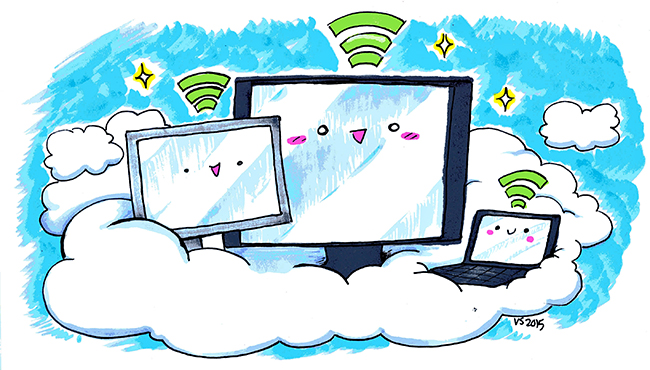UT hopes to complete its move from an outdated mainframe system to a modern cloud system by 2020.
The mainframe computer system, primarily used for processing bulk data for a large entity such as a university, was popular in the 1980s and 1990s, according to Brad Englert, chief information officer and information technology systems chief operator. The cloud system refers to a computing system that relies on the Internet for storing and accessing data, rather than a hard drive, Englert said.
“The programming language that was used to develop the administrative system is not widely used anymore,” Englert said. “As people move more things to the web and cloud computing — meaning not having the equipment on site, but relying on equipment at other places — the toolsets that were used turn out not to be as flexible and good as new toolsets.”
Englert said the case for change was made after former UT president Bill Powers established an information technology advisory committee in 2008 to map out UT’s information technology strategy for the next five years. An administrative system master plan was developed in 2012, and the transition to the cloud system began last summer, Englert said.
The implementation of the system has two main stages: The first one is to replace the Human Resources payroll system, which could be completed by early 2017, and the second is to replace the finance and procurement system, according to Leslie Saucedo, director of payroll services. Saucedo said UT will work with a company called Workday, which is a cloud-based system that services as a software solution, improving the huge computers currently used with the mainframe system.
“Some of the technology is becoming a little bit out of date and we’ve had some limitations … As technology changes you want to change with it,” Saucedo said. “It’s basically taking all the information we have on our mainframe and trying to become more current and use the tools that are available to us in the cloud.”
The new cloud-based system will change the computer system for Human Resources, which is how people are hired, and would also make it easier for customers and employees to pay bills, make purchases and even clock-in and clock-out from their phones, according to Saucedo.
Nick Sajatovic, a supply chain management junior who is an activity supervisor at Gregory Gym, said he likes the current system because of its reliability.
“I know, for my job at least, you need to sign in at the front with the building coordinator, and then they will assign the specific task for you, so I feel like it’s very streamlined and standardized, so I feel like if you just had people randomly signing in on their phone, you wouldn’t know where they were,” Sajatovic said. “I think we’re pretty standardized with the computer system we have. I think it works pretty well.”
Saucedo said moving away from the mainframe system will improve convenience for the campus community.
“They are going to be able to do so much more and access so much more from their mobile device,” Saucedo said. “I think this is going to be a great thing for our university and for our campus and employees, students, everybody.”





















